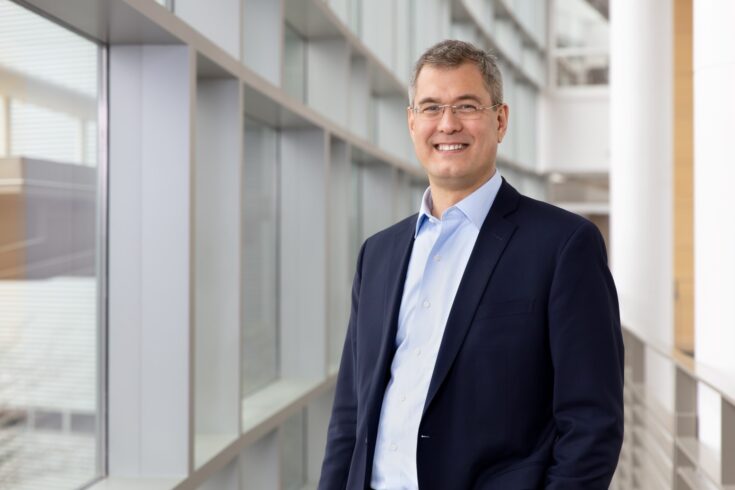Through the Science and Technology Facilities Council (STFC), ILL is funded and managed by France, Germany, and the UK, in partnership with 11 different countries.
Dr Andersen is currently the Associate Laboratory Director for Neutron Sciences at the US Oak Ridge National Laboratory. He oversees the operation and management of two neutron facilities: the Spallation Neutron Source (SNS) and the High Flux Isotope Reactor.
Directing a range of research
ILL, based in Grenoble, France, is an international research centre that is dedicated to conducting a range of experiments using neutron scattering.
Neutron scattering is a research technique in which tiny subatomic particles called neutrons are fired at a sample and the path they take through the sample is recorded to infer detailed information about the sample’s internal structure.
ILL has been home to cutting-edge science for over 50 years. To date ILL accommodates approximately 1,400 visiting researchers from over 40 countries per year as well as leading industry partners to research topics from particle physics to medical biology.
Unique potential
STFC Executive Chair Mark Thomson said:
I know that I speak for the entire research community in thanking Professor Paul Langan for his outstanding work as Director of the ILL and in wishing him all the best for the future.
The ILL is one of the world’s premiere research institutions and has a unique potential to yield much needed insights into diverse areas of research from studies of how viruses interact with hosts at the atomic level to the role of magnetism in the future of quantum computing.
It is fitting then that someone with such a unique wealth of experience of directing the highest level of research as Dr Ken Anderson has been appointed to realise this potential going forward.
I have every confidence in Dr Anderson’s ability to continue to push the boundaries of neutron sciences at ILL and to further the work of Professor Langan and colleagues.
An amazing privilege
After his appointment, Dr Ken Anderson said:
The ILL is a really special place for me. Professionally, it’s where I come from and it’s where I grew up. It’s a place I care deeply about.
It is an amazing privilege for me to be able to lead the ILL, particularly at this important time. ILL is and will remain at the forefront of neutron science in Europe and in the world.
Coming out of the Endurance programmes, we are set for delivering an unprecedented level of scientific impact and productivity. That is how we demonstrate the importance of ILL to the European science ecosystem and set the stage for continued long-term scientific operation.
I look forward to returning and catching up with all my old friends again, as well as meeting and working with all the new staff who have joined since I left ILL in 2010. A lot has happened since then. I have a lot to engage with, and I’m really looking forward to getting stuck in.
Further information
About Dr Ken Anderson
As Associate Laboratory Director for Neutron Sciences at the Oak Ridge National Laboratory, Dr Andersen has overseen of the Spallation Neutron Source (SNS) and the High Flux Isotope Reactor. These are facilities that annually support about 3,000 visiting scientists. Previously, Ken was Director for the Neutron Technologies Division within the Neutron Sciences Directorate.
Between 2010 and 2019, Ken was head of the Neutron Instruments Division at the European Spallation Source in Lund, Sweden. Prior to that, he oversaw the Neutron Optics lab at ILL and has worked as an instrument scientist at both ILL and STFC ISIS Neutron and Muon Source. He has also spent a brief period as a postdoc at the KENS neutron facility in Japan.
His research interests centre around the design and optimisation of neutron instruments for both steady-state and pulsed neutron sources. He has a PhD in physics from the University of Keele in the UK and ILL (1991).
Dr Anderson is succeeding Professor Paul Langan as ILL director. Professor Langan has returned to the US Oak Ridge National Laboratory as Associate Laboratory Director for Biological and Environmental Systems Science.
Top image: Credit: Dr Ken Anderson

